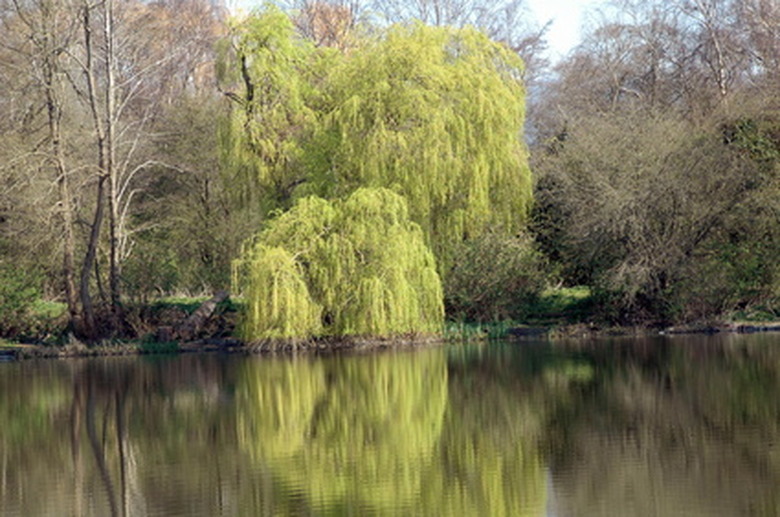Wood Boring Insects On Willow Trees
Wood boring insects on willow trees can cause significant damage, particularly because infestations often go unrecognized or are confused with other problems. Identify wood borers that choose willows as hosts as well as the problems they cause and effective control methods. Provide proper care to your willow trees to increase the potential for infestation avoidance or management.
Proper Care
Willow trees (Salix species) are reasonably easy to maintain; providing the care they need to avoid borer infestations is often a sufficient method of control. Grow willow trees in a location that provides full sunlight to extremely light shade, according to the University of Florida IFAS Extension. Willows will thrive in moist soils, but good drainage is key. Waterlogged soil provides ideal grounds for fungal infections that leave trees in decline and open to insect problems. Nearly all soil types are acceptable, but avoid extreme alkalinity or acidity.
- Wood boring insects on willow trees can cause significant damage, particularly because infestations often go unrecognized or are confused with other problems.
- Willow trees (Salix species) are reasonably easy to maintain; providing the care they need to avoid borer infestations is often a sufficient method of control.
Wood Borers
Cottonwood borers (Plectrodera scalator) are widespread wood boring insect pests on willow trees, according to Kansas State Research and Extension. These insects also cause problems for cottonwood and poplar trees. These borers are long-horned beetles that, in the larval stage, display cream-hued bodies that reach a length of up to 1 1/2 inches. Adults reach up to 1 1/4 inches and display bodies in black with stripes of white hair.
Symptoms and Damage
Wood boring insects on willow trees feed in both their larval and adult stages. During the end of spring and throughout summer, adults feed on new willow growth and chew holes into bark near the soil line into which they lay their eggs. Within two weeks, the larvae hatch and tunnel into the trunk or soil. Unfortunately, growers may not notice the problem or may think damage is associated with other pests like woodpeckers, according to the Texas Agricultural Extension Service. Look for holes as well as a residue that resembles sawdust as a sign of borer infestation. Adult damage includes the death of shoots that often fall to the ground. Larvae feed on and near roots, often destroying internal plant tissue resulting in severe decline, collapse or tree death.
- Cottonwood borers (Plectrodera scalator) are widespread wood boring insect pests on willow trees, according to Kansas State Research and Extension.
- Within two weeks, the larvae hatch and tunnel into the trunk or soil.
Preventive Management
Cottonwood borers are considered a "secondary" infestation because they often invade trees that are already ill. Preventive management often inhibits infestations from occurring. Prepare a cultural environment that adheres to your tree's needs by avoiding extreme wind, stress and cold injury, when possible. Avoid creating wounds on trees through proper pruning and careful mowing. Sanitize tools such as pruning shears between each cut and each use to prevent disease transfer. If your tree experiences a problem, remove and collect affected plant parts, according to the Texas Agricultural Extension Service.
Chemical Control
For willow trees that are experiencing a wood boring insect infestation, chemical control measures are effective, particularly in conjunction with care measures that create tree health and vigor, according to the Texas Agricultural Extension Service. For cottonwood borers, apply an insecticide with the active ingredient chlorpyrifos. Determine the egg-laying period for your region and apply the insecticide to all parts of the tree during this time. Since chemicals only provide control for up to 10 weeks, reapply as needed. Contact your county extension agent for assistance.
- Cottonwood borers are considered a "secondary" infestation because they often invade trees that are already ill. For willow trees that are experiencing a wood boring insect infestation, chemical control measures are effective, particularly in conjunction with care measures that create tree health and vigor, according to the Texas Agricultural Extension Service.
